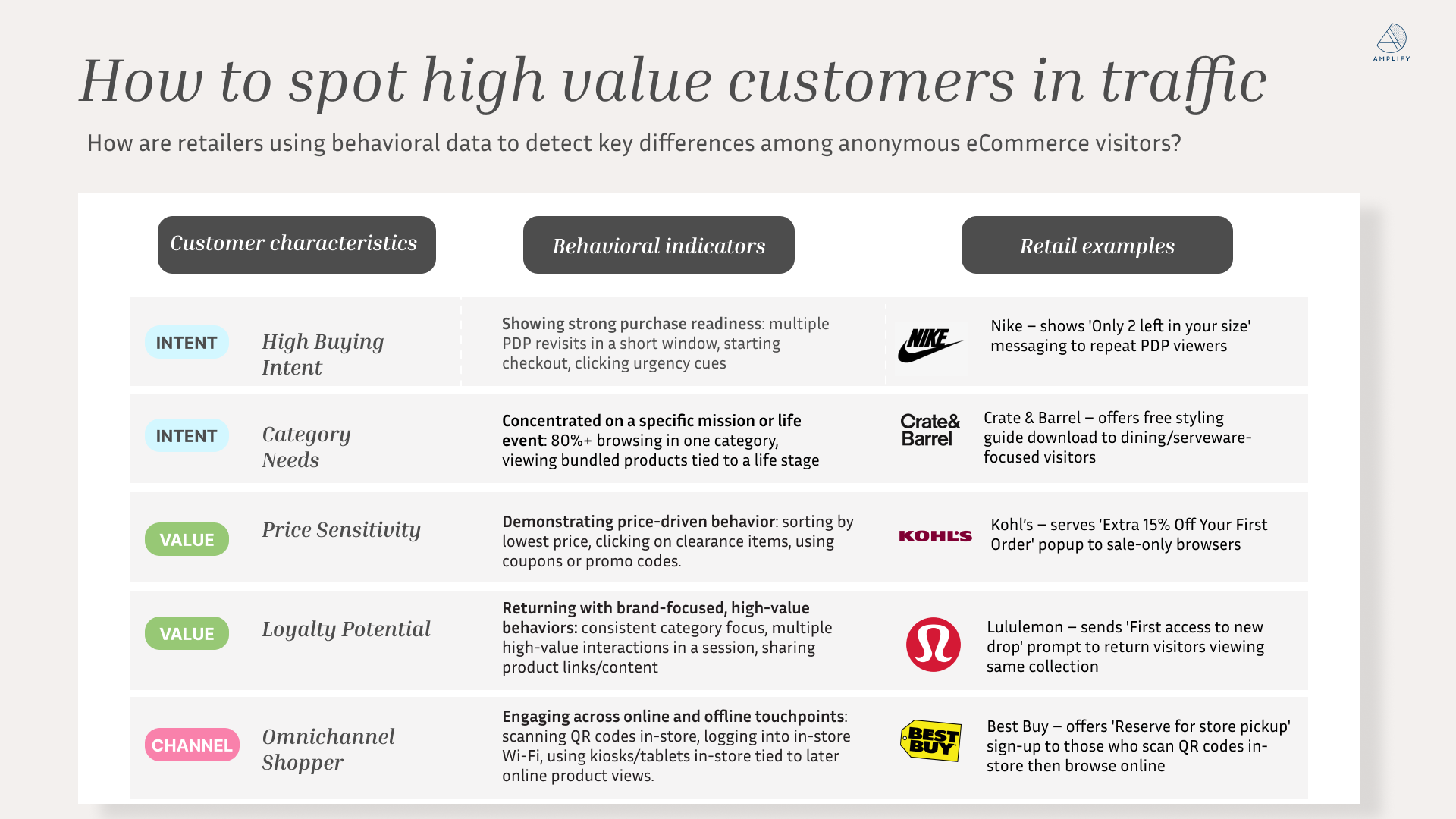Retailers today are swimming in data, but the hardest challenge is often the most basic: how do you tell one anonymous visitor from another — and, more importantly, how do you deliver high impact moments that are relevant to their needs?
At Amplify, we’ve been working on this exact question. By looking closely at behavioral signals, retailers can detect subtle differences in customer intent, value, and channel engagement long before a shopper ever creates an account or joins a loyalty program.
The framework above highlights five key ways retailers are doing this today:
1. High Buying Intent
When shoppers revisit the same product detail page multiple times, start a checkout, or click urgency cues (“Only 2 left in stock”), they’re signaling strong purchase readiness. Brands like Nike lean into this moment with urgency messaging targeted to repeat product viewers.
2. Category Needs
Sometimes intent is less about one product and more about a life moment. Visitors who spend 80%+ of their browsing in a single category or view bundled products are telling you something specific about their mission. Crate & Barreltaps into this by offering guides tied to dining and serveware, aligning with milestone events like moving or entertaining.
3. Price Sensitivity
Not every visitor has the same value. Some shoppers demonstrate clear price-driven behavior — sorting by lowest price, hitting clearance sections, or entering promo codes. Kohl’s captures this audience with personalized discounts like “Extra 15% off your first order.”
4. Loyalty Potential
High-value customers reveal themselves through repeat engagement with a brand’s core categories. They come back for the same types of products, share links, and interact deeply with collections. Lululemon nurtures this group by giving them early access to product drops, strengthening brand affinity.
5. Omnichannel Shoppers
Your most valuable customers don’t see channels — they see your brand. They scan QR codes in store, log into Wi-Fi, or use kiosks to later view products online. Retailers like Best Buy bridge these touchpoints by prompting in-store browsers to reserve products for pickup, creating a seamless handoff between physical and digital.
Why this matters
Rather than trying to interpret all the available data trails left by anonymous traffic, focus on data that signals key customer characteristics. Then, tailor the experience, content, and CTAs to what you believe their goals and needs are at that moment (e.g., high intent vs low intent, potential loyalist vs one time shopper) and you'll get closer to a meaningfully personalized interaction.



